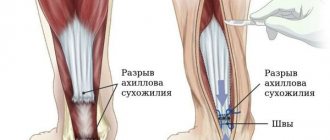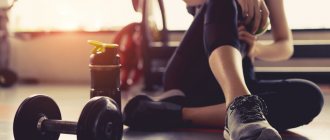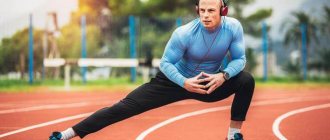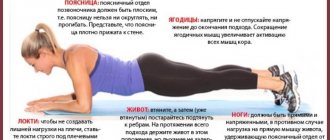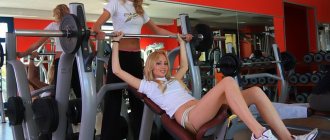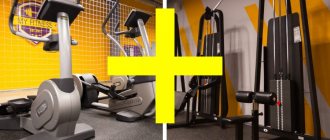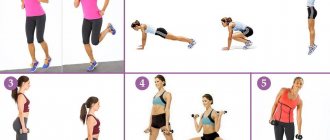Lower back pain after exercise is a condition that is familiar to every person. Both professional athletes and ordinary people who prefer to engage in fitness face it. The lumbar spine is a weak area for any physical activity, both during intense sports and during daily household stress. This can be explained by the fact that the lower back is the center of our body, its supporting point. Most often, pain in the lower back is caused by a weak muscle corset, which is not able to properly support the spinal column. Incorrect posture also worsens the general condition. In professional athletes, the lower back is often overloaded due to regular exercise.
State Description
If the lower back hurts badly after a workout, then a person cannot get out of bed normally, moves in a bent position, and even breathes normally in this condition is very difficult for him. Many people develop pain in the back due to poor body fitness.
But it should be noted that athletes are not protected from this condition. Bodybuilders, for example, with age begin to feel severe stabbing pain in the spine after training; unbearable pain occurs even when trying to simply bend forward. Therefore, we can conclude that lower back pain can occur in any person, regardless of whether he plays sports or not.
In weightlifters, back injuries most often occur in the lower spine and lower back. Unpleasant sensations range from mild short-term attacks of pain to long-term acute pain. Causes of lower back pain after exercise can be associated with severe muscle strain, disc damage, age-related changes in bone tissue, poor posture, and poor technique for lifting heavy objects in the gym.
To prevent the occurrence of such a situation, as well as various complications, it is necessary to determine the mechanism of development of the pain syndrome and its main symptoms.
Signs of developing discomfort
Do your lower back muscles hurt after training, do you experience weakness, fatigue, a general feeling of malaise, or numbness? These are all serious symptoms to worry about. This condition may indicate problems with the bowels or bladder. In order not to bring the disease to a dangerous stage of development, it is important to promptly consult a doctor who will help prescribe effective treatment.
Regular back pain in a child is also a serious cause for concern. Most often, this condition occurs in childhood due to wearing heavy things and problems with posture. But acute pain syndrome can also be a sign of a serious illness: scoliosis and even tumor formation.
Lower back pain: why training provokes it
Fitness classes most often cause the formation of protrusion in the lumbar region (protrusion of the intervertebral disc beyond the spinal column), pinching of nerves and blood vessels. You can feel this directly during training.
“It is important to distinguish between “lazy” pain, which occurs during the performance of non-traumatic asanas and exercises that nevertheless give a feeling of exertion,” says Alexey Vladovsky , kundalini yoga instructor at the “LIVE!” TV channel. “It’s rather a feeling of discomfort that grows gradually. Truly dangerous pain cannot be confused with anything - it is sharp, bright, and occurs suddenly.” If you feel it, stop immediately and try to remember what movement caused the pain. Do not hesitate to consult a doctor.
Some problems with the lumbar spine (in particular protrusions) do not announce themselves so loudly and immediately and form gradually. Therefore, fitness instructors advise always paying attention to how you feel after training. If after exercise you feel severe discomfort or slight pain in the lower back, do not brush this fact aside. You may be overloading this area of your back or not using proper technique for the exercises you are doing.
Discomfort in ligaments and muscles
Pain in the ligaments usually manifests itself both at rest and during movement, but when moving, the pain syndrome only increases.
As a rule, the lower back hurts after back training due to sprained ligaments or muscles. This condition can be prevented by developing muscles and strengthening the spine. Even people who have previously been injured while playing sports can significantly improve their condition and strengthen their muscles.
Professional athletes know that the simultaneous work of antagonist muscles is very important when training. This is especially true for those who have serious back problems. To prevent post-workout pain, it is important to try to evenly distribute the load on the spine while playing sports. This means that doing 300 squats in order to strengthen the abdominal muscles is incorrect and even dangerous to health. The trainee must evenly distribute the entire load on the spine, this also applies to antagonist muscles.
Some types of exercises are prohibited for persons with osteochondrosis. Weightlifting, which puts a lot of stress on the spine, can only aggravate the pain syndrome. It is important to exclude or carefully monitor the following types of exercises: leg press from a seated position, deadlift, lunges with a load on the shoulders, military press.
Professional athletes have a well-trained body, so the likelihood of injury or some kind of complication in their case is minimal. Beginners in the sport should pay special attention to the technique of lifting weights, since performing the exercises incorrectly can cause serious health problems. If your lower back hurts after working out your abs, then it is important to reduce the weight you lift or the number of repetitions.
Features of the exercises
When performing exercises to strengthen the muscular skeleton and spine, emphasis should be placed on the oblique, transverse, lumbar and rectus abdominis muscles, as well as the quadratus lumborum and paraspinal muscles of the back.
Many pain sensations can be eliminated using traditional treatment methods: proper rest, the use of cold and warm compresses, and taking medications. If the pain syndrome continues for several days, and the patient develops weakness and a feeling of malaise, then it is important to immediately see a doctor.
Some causes of back pain associated with the spine may go undetected for a long time. The attending physician will help you choose an effective method of treating the spine and eliminating pain.
Diagnostic methods
The Health Workshop specialists will accurately determine the cause of back pain using the following diagnostic methods:
First, a basic survey of the patient will be conducted to determine what exactly preceded the onset of pain, what the nature of the pain is, and so on. Next, a visual examination of the patient and physical palpation of the spine is carried out. If the pain intensifies when pressing on the spinal column, this makes it possible to eliminate diseases of the internal organs. If necessary, the patient can be referred to a cardiologist, gynecologist, orthopedist or other specialized doctor.
Discomfort in the lower back
Why does my lower back hurt after back training? The most common cause of this condition is improper exercise technique. When training, the body should resemble a straight and even line, and the lower back should be located at the same level as the legs and torso. Incorrect position of the lower back during exercises often provokes severe pain. In this case, you should immediately stop exercising, otherwise muscle discomfort may lead to the development of serious complications.
In addition, lower back pain can develop with different types of dynamic planks. The technique for performing each type of plank can differ significantly - some of them involve raising and lowering the spine, which provokes pain.
Discomfort in the back
The back, including the spine, bears the brunt of the load during training. It is for this reason that you should not be very surprised at the occurrence of pain in this area. If unpleasant symptoms appear, it is important to immediately stop doing the plank and get proper rest. Continuing training is dangerous for the development of progressive back pain, as well as the appearance of diseases: kyphosis, scoliosis, hyperhidrosis.
Also, the back can be injured when performing a dynamic plank. Incorrect sudden movements, as well as poor technique, can cause damage to the vertebrae or problems with the nutrition of the intervertebral discs, which can have serious consequences for human health.
Treatment for back pain
There are several methods for treating back pain. A neurologist will select the optimal treatment for you, taking into account the patient’s age, lifestyle, level of physical mobility and clinical manifestations.
In the drug treatment of back pain, NSAIDs, analgesics, muscle relaxants, and B vitamins are usually used. Physiotherapy, exercise therapy, IRT, massage, spinal traction, and muscle relaxation are also prescribed.
For back pain, to ensure quality treatment, it is advisable to see one doctor. This is not difficult to do with qualified specialists from the AXIS center.
Elimination of discomfort
What to do if your lower back hurts after training? It is important to remember that you should stop exercising immediately after the first unpleasant symptoms appear. It is important to take a relaxed position, rest, and assess the severity of pain. Perhaps it only manifested itself due to a muscle spasm or minimal overexertion, but there is a risk of real health problems.
In addition, it is important to pay special attention to the training technique. After a correctly performed exercise, back pain and strain do not occur.
Diagnostics
To identify the cause of back pain, the neurologist prescribes a comprehensive examination:
- Blood tests. They help identify the presence of infection and inflammation in the form of leukocytosis and increased ESR. A decrease in hemoglobin will indicate anemia, which can have many causes, and one of the possible reasons is oncology.
- MRI (hospital does not provide MRI services).
Visualizes the condition of all components of the spine. Helps differentiate the type and nature of the tumor, determines the distance between the vertebrae and the degree of compression of the roots. - CT. Detects fractures and allows you to find the smallest fragments after injuries. All this in three dimensions.
- Radiography. The most inexpensive way to diagnose back pain and identify the condition of bone tissue. Prescribed for suspected fractures, arthritis, scoliosis, osteoporosis, spondyloarthrosis.
- Electromyography (EMG). Determines indicators of bioelectrical activity of muscles and peripheral nerve endings.
- Ultrasound of the vessels of the neck and brain. In triplex or duplex mode, it is used to assess the patency of blood flow through arteries and vessels. Their condition is checked - wall thickness, permeability, etc.
Compliance with training rules
When conducting training, a person must follow the following rules:
- handle cargo and heavy objects carefully;
- regularly consult with a trainer (at least in the first 6 months of training in the gym);
- wear comfortable, loose clothing and shoes during training, which will help prevent the development of injuries;
- drawing up a proper diet with plenty of calcium in foods (it will help improve bones) and protein (it effectively affects weight and strengthens the muscle corset).
If back pain appears unexpectedly after working out in the gym, you should not panic too much. It is important to listen to the state of your body, reduce the physical stress on the body, which it cannot fully cope with at this stage.
If your lower back hurts after strength training, it is important to see a doctor immediately. It is dangerous to carry out self-treatment, since such a lesion in the back can be eliminated with the help of compresses and local medications, which would be very dangerous for other types of injuries.
Basic Rules
When engaging in active sports, it is important to adhere to the following rules:
- Move more. Adopting a healthy lifestyle, monitoring your weight, actively playing sports, and avoiding sedentary activities will help reduce the risk of back injuries and pain. The more a person moves, the better the condition of his body.
- Stop smoking. Nicotine in cigarettes negatively affects the structure of intervertebral discs, changing it and leading to rapid dehydration. As a result, the discs lose their strength and wear out quickly.
- Maintain correct posture. Some people, due to their professional activities, often have to spend a lot of time in a sitting position. Some experts advise placing the computer screen at eye level, the chair should correspond to the person’s height, so that when sitting, the bend angle in the knees reaches 90 degrees.
- Take regular breaks if you have to stay in one position for a long time. You should get up from your desk every half hour and walk around the room for a few minutes to relieve the pressure your spine receives while sitting.
- Try to use your laptop and phone less. With regular use of a mobile phone, when a person’s neck is in an inclined position or turned to the side, the state of posture greatly worsens and additional stress appears on the spine. To prevent such problems, you should purchase a special Bluetooth headset that will help relieve tension in the spine and neck.
Correct posture
Watch your body position while sleeping. Doctors advise sleeping on your side and on a firm mattress. The position should be as comfortable as possible. The fetal pose helps eliminate tension in the hips and relieves fatigue. The worst position for sleeping is considered to be on the stomach; it provokes the development of spinal curvature.
If pain in the back develops, you should immediately stop training and perform incorrect exercises. The back should fully rest and recover. Also, if your back hurts in the lumbar region after training, it is important to visit a doctor who will prescribe anti-inflammatory drugs and prescribe optimal recovery for the patient’s body.
Types of post-workout pain: what is it like?
Pain after active power loads is a natural physiological process, which is due to the fact that during the load, protein molecules in the muscle fiber break and processes begin at the cellular level, during which waste products of phagocyte cells are intensively released. It is at this moment that we begin to feel unpleasant pain:
- Post-workout pain is moderate - the muscles are tense the next day, you feel full and pleasantly tired. Such pain tells us that the process of formation of new muscle structures is actively underway.
- Delayed muscle pain or soreness - pain most often occurs on the second day after training, does not pose a health hazard and indicates active processes in muscle building.
Such sensations are typical for beginners or if there was a long break in the training process and indicate adaptation of the muscles to the load. Such pain is not a reason to stop training; it tells us that the exercises have forced the body to work and the muscles will begin to grow with renewed vigor.As you get used to it, the muscles will no longer react so painfully and in order to avoid the problem of a training plateau, you need to make changes to the training program every 2 months. A massage, a contrast shower, a hot sauna or a short warm-up will help you cope with pain. All this will speed up blood circulation and soon you will forget about the manifestation of sore throat. In your next workout, work a different muscle group so that tired parts of the body can fully rest and recover. If the pain does not subside within a week, consult a doctor, as this may be a syndrome of illness or injury.
- The feeling of heat in the muscles that occurs directly during the exercises, especially at the end of the approaches, is completely safe and indicates the active accumulation of lactic acid in the muscle fibers. This pain occurs at the moment when the athlete’s actions are at the limit of their capabilities, and this is where we are talking about the most efficient work of the muscles.
If pain appears in those muscle groups that are not directly involved in the exercise, it means that you are not holding your body correctly and performing the movement.The burning sensation in the muscles is easy to control and even easier to avoid this trouble - just alternate approaches with 20-30 second pauses for rest. The heat in your muscles will subside and you will once again be ready to work at a high level of efficiency.
